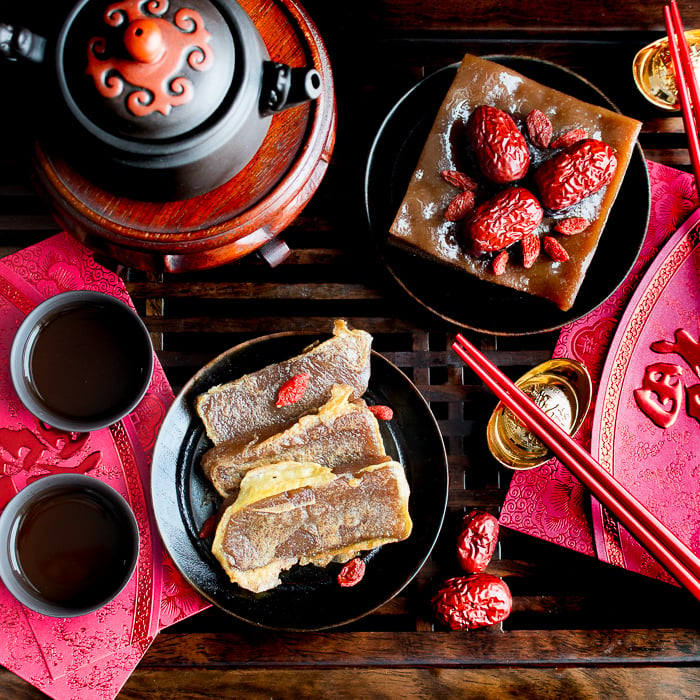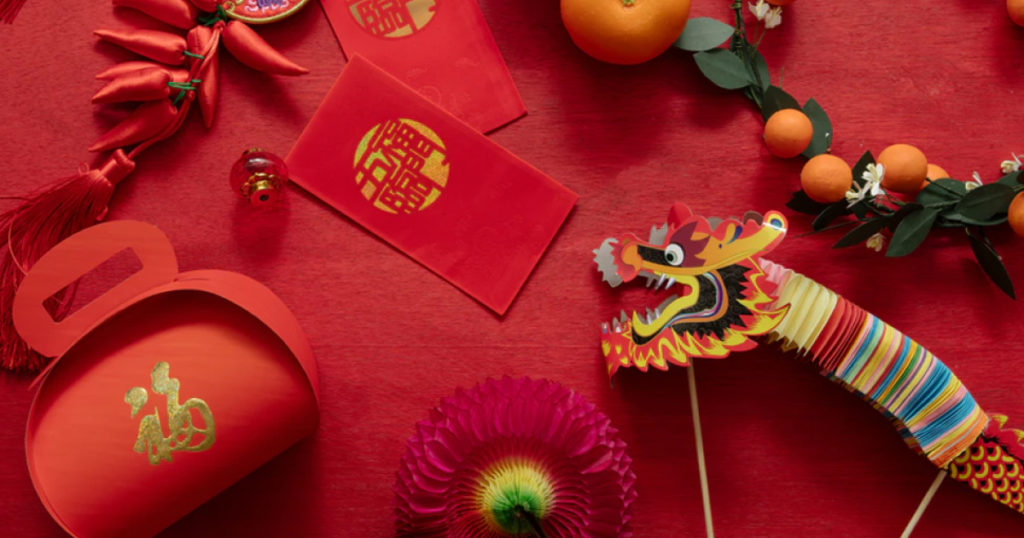Chinese New Year Traditions
Chinese New Year Cake – Nian Gao
Nyen-gaoww (‘year cake’), a sweet rice cake, is a popular dessert eaten during Chinese New Year. It was originally used as an offering in ritual ceremonies before it gradually became a Spring Festival food. The pronunciation of Nian Gao sounds like ‘year high’ (年高), which symbolizes a higher income, a higher position, the growth of children, and generally the promise of a better year. It is considered good luck to eat it during the Chinese New Year period.

generally the promise of a better year.
The Legend of Nian Gao
Nian Gao has a legend about its supposed Suzhou origin, around 2,500 years ago. In the Spring and Autumn Period (722–481 BC) of ancient China, the whole country was divided into different small kingdoms and people suffered from the chaos of war.
At that time, Suzhou was the capital of the Wu Kingdom. Strong walls were built to protect Wu from attacks, and the king held a banquet to celebrate their completion. All of the people ceased to worry about the war, except for the Prime Minister Wu Zixu (伍子胥).
Wu Zixu told his entourages: “War should not be viewed lightly. The strong wall is a good protection indeed, but if the enemy state besieges our kingdom, the wall is also a hard barrier to ourselves. In case things really go badly, remember to dig a hole under the wall.”
Many years later, after Wu Zixu passed away, and his words came true. Many people starved to death during the seige. The soldiers did what Wu Zixu told them before and found that the wall under the
earth was built with special bricks made from glutinous rice flour.
This food saved many people from starvation. These bricks were the supposedly original Niangao. After that, people made Niangao every year to commemorate Wu Zixu. As time passed, Niangao became what is now known as the Chinese New Year cake.
The year of the “Rafter Rat “
Charged: critical, intelligent, confident, alert, social, dignified, articulate, forthright, spontaneous, inspired, financially adept, challenging, meticulous and tidy.
Deplete: volatile, rude, proud, argumentative, blunt, vulgar, tactless, close-minded, hypochondriac, vain, snobby, aloof, harshly competitive and fanatical.
Image: The Rooster talked about in Chinese Astrology is well known to the Chinese as the ordinary version of the phoenix. This bird is an ancient amulet used to ward off the 5 poisons creatures (snake, scorpion, spider, centipede and toad). The Rooster (not hen) is sacrificed only at rituals requiring oaths (trustworthy). The most familiar image is, of course, the Rooster lording over hens in the yard and dueling to the death in a cockfight – extrovert extraordinaire. There is the precision of its sharp beak (intellectual), the powerful wings (competitive) and the call to sun at dawn and dusk (eloquence). Basics materials become luxury items when chosen by the Rooster eye. Roosters collect books and documents.
Compatibility: Most signs feel comfortable around Rats. They are expert at making most signs feel at ease. Rats get on very well with Ox and Dragons, who can make good use of the Rat’s cleverness. Monkeys, as partners, add daring to the Rat’s often-shy character.
Most animal signs can add the Rat’s cleverness to their own sense of power. Goats and Rabbits find Rats insensitive. The independent and changeable moods of a Horse can be a Rat’s undoing.
Native Element: WATER
Constellations: Bat (10. Maiden [–]), Rat (11. Void [-]), Swallow (12. Rooftop [-])
Correspondences: 11pm – 1am, 11th moon, narcissus flower, carbuncle, north
About Chinese Almanac Astrology and Polestar Astrology
Calendars are found at the base of many ancient cultures. The way in which any culture, nation or
tribe views Time is essential to all its customs, rituals and sense of Life and Death.
The Chinese civilization and its long-standing calendar tradition for the last 2500 (until 1949) the
Chinese government has collected and calibrated the various calendar cycles observed by all those
cultures it has digested or allied with. Each year it published an almanac reflecting the synthesis of
these various cycles (still published in Hong Kong and Taiwan).
The Chinese “tong shu” or almanac has been consulted by emperors and farmers alike for millennia to
select optimum auspice for the action of government and the planting and harvesting of crops.
Generals consulted it before battles, Daoists before the performance of rites, acupuncturists for “open”
points, builders before digging foundations and village folk to plan a wedding or funeral. Cataloging
the collective experience/data was the duty of one of the Chinese governments largest departments –
the department of Astrology and Germany – a kind of cosmic Advisory Board.
We look at each of the major cycles for its individual indicators and how the various cycles weave and
influence each other.

